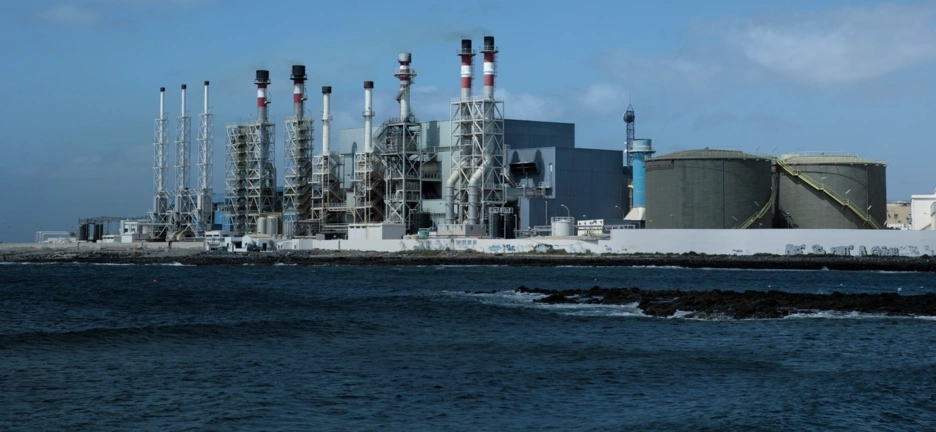Addressing Water Stress through Public-Private Partnerships in Desalination Projects

To achieve the Sustainable Development Goals by 2030, Latin America and the Caribbean (LAC) needs to invest more than USD 370 billion in the water and sanitation sector alone.
In a complex macroeconomic and fiscal context, where the total national debt in LAC rose from USD 3 trillion in 2008 to nearly twice as much today (USD 5.8 trillion, equivalent to 117% of GDP), it is difficult to request a greater commitment from governments. Given this scenario, solutions that involve the private sector and the support of multilateral development institutions should be sought as matter of urgency, to ensure that these investments are efficient, sustainable, innovative, fiscally responsible, and are always aimed at projects that respond directly and optimally to the public interest, and subsequently to the objectives of development, growth and equality.
Many may be struck by the need to invest in desalination plants when LAC is the most water-rich region in the world, with 32% of the global renewable water resources. However, inequality is as prevalent here as in other fields: 35% of the region’s population lives in areas with medium-high to extremely high water stress, and 60% faces water risk; i.e. the institutional inability to preserve the provision of quality services..

This is partly due to the fact that one out of three inhabitants in LAC lives in coastal areas. With the expected levels of population growth, domestic, agricultural and industrial water consumption will skyrocket. This problem must be solved through three main lines of action: more efficient use of resources (consumption savings, leak reduction, reuse), surface water (reservoirs, dams, rivers, groundwater) and meltwater exploitation, and desalination.
To date, desalination technologies have been widely used and developed in countries, such as Spain. At a conference in March, jointly organized by the National Concessions Office of Chile’s Ministry of Public Works and the IDB Group, AEDyR (the Spanish desalination and reuse association) stated that one-fifth of their region’s production is used for agriculture. In fact, the first desalination plant in Europe was installed in the Canary Islands in 1964.
Experts from Israel, the US, Australia and the Middle East also presented their findings at the conference, as well as several from LAC, including AEDyR, Sacyr, Almar Water Solutions, Mekorot, Mitsui, IDE Water Technologies and Israel-s Desalination Society.
Many have been involved in structuring concessions in Peru (Proinversión and Sedapal), Brazil (Unidade de PPP da Secretaria do Planejamento e Gestão do Estado do Ceará and Companhia de Água e Esgoto do Ceará) and Chile. Interestingly, the world’s first industrial desalination plant was installed in such country at the end of the 19th century as a resource for the mining industry. Today, Chile is exploring the potential to develop concessions in multipurpose desalination plants.
According to Almar Water Solutions, multipurpose desalination megaprojects for municipal, industrial and agricultural use are currently booming—particularly in the Gulf Region, the Middle East and North Africa—through traditional concession or PPP schemes. AEDyR and Sacyr explained how the traditional desalination challenges have been overcome through sustainable technological progress.
Energy consumption for desalination has been significantly reduced, down to one fifth of 1970 consumption levels. This has brought the cost of water down—the current price of desalinated water is less than one dollar per m3 compared to bottled water, which is five hundred times higher.
The sector has evolved, making desalination a competitive alternative in areas where it was not before and offering concession schemes to guarantee the development, operation and provision of quality services. However, we should always bear in mind that the only unaffordable cost is having no water access at all. Therefore, the discussion should focus on seeking an alternative that provides access to water in the most efficient and sustainable way.
Challenges are yet to be addressed. Undoubtedly, the water-energy relationship and the joint implementation of renewable sources, as experienced by other regions, must be part of the equation. For that reason, it was interesting to learn about the Southern Seawater Desalination Plant in Australia, which has put in place schemes that guarantee the use of sustainable sources and the highest standards of environmental and social sustainability.
Success in project development and the provision of quality services to the population will depend heavily on how well the projects are planned, developed, and structured. Properly implemented PPPs can tackle development challenges if they follow rigorous processes that ensure adequate planning and prioritization. This includes the technical, social, environmental, economic and financial, legal and fiscal, and risk-sharing analyses that are necessary to attract the private sector, while defending the public interest.
From the IDB’s PPP Single Window, we will continue acquiring knowledge and collecting evidence to help countries develop robust projects—through workshops as the one available here, strengthen their regulatory, institutional and project development capabilities, and structure effective and sustainable PPPs that prioritize the water and sanitation sector. Desalination is an invaluable opportunity to continue promoting sustainable development in LAC.
LIKE WHAT YOU JUST READ?
Subscribe to our mailing list to stay informed on the latest IDB Invest news, blog posts, upcoming events, and to learn more about specific areas of interest.
Subscribe



